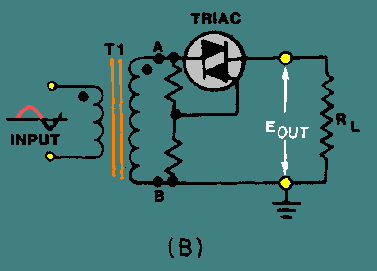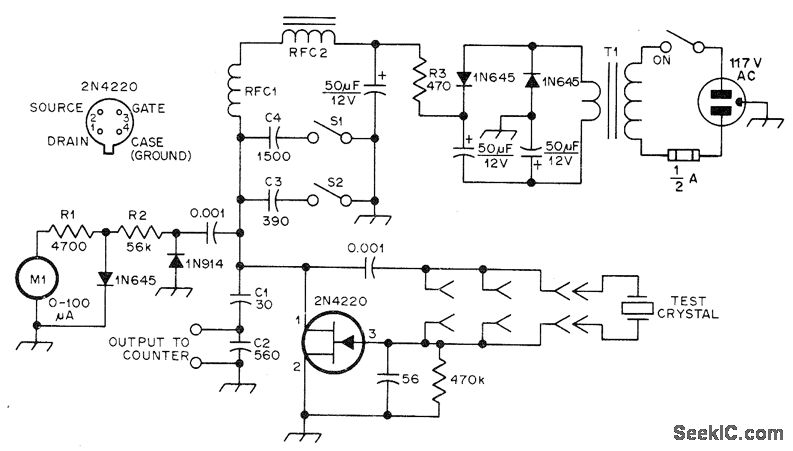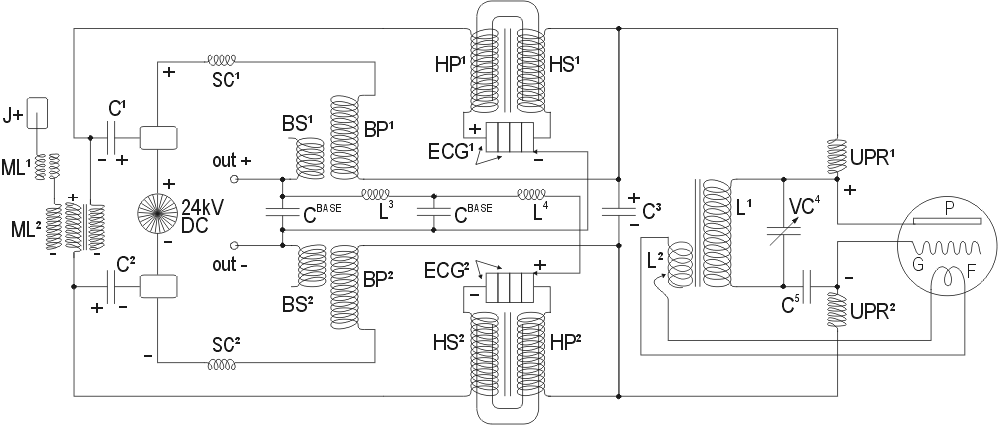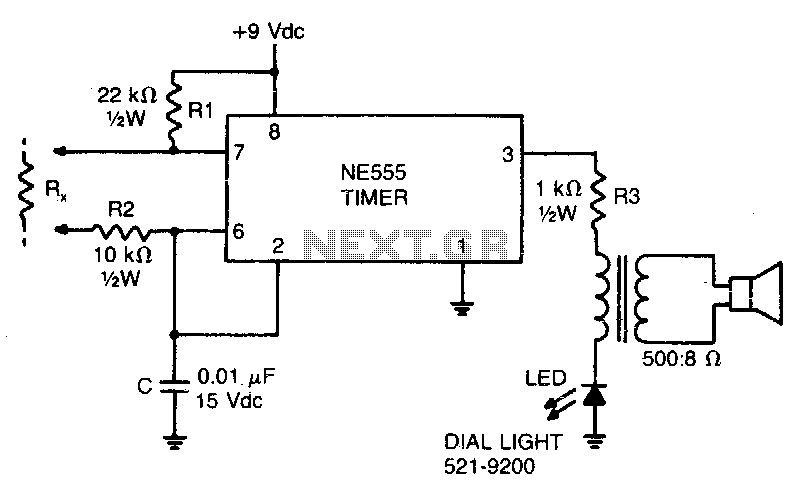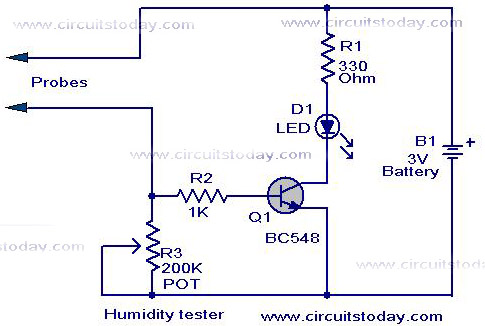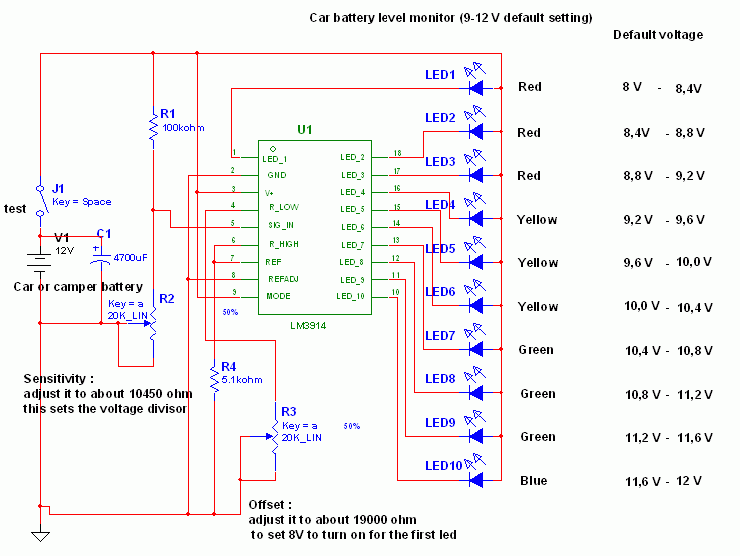
How to test a triac
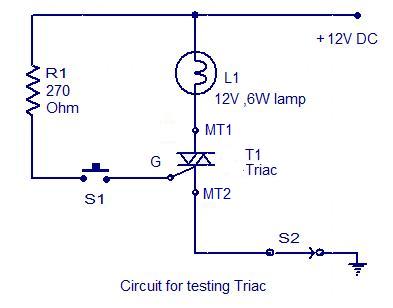
A multimeter can be utilized to assess the condition of a triac. Begin by setting the multimeter selector switch to a high resistance mode (for example, 100K). Connect the positive lead of the multimeter to the MT1 terminal of the triac and the negative lead to the MT2 terminal (reversing the connections is acceptable). The multimeter should display a high resistance reading (indicating an open circuit). Next, switch the selector to a low resistance mode and connect the positive lead to the MT1 terminal and the gate, while connecting the negative lead to the MT2 terminal. The multimeter should now show a low resistance reading, indicating that the triac is in the ON state. If these tests yield positive results, it can be concluded that the triac is functioning properly. However, this test may not be applicable for triacs that require high gate voltage and current for triggering. An alternative method for testing a triac involves a simple circuit arrangement that demonstrates the basic operation of a triac. Connect the triac to the circuit as illustrated in the circuit diagram and turn ON switch S2. The lamp should remain off. Press the push button switch S1, and the lamp should illuminate, indicating that the triac has switched ON. Upon releasing the push button, the lamp should extinguish. If the results of these tests are positive, it can be inferred that the triac is in good condition.
To conduct a thorough assessment of a triac using a multimeter, the following steps can be implemented. The multimeter should first be set to a high resistance mode, typically around 100K ohms. This setting helps to measure the off-state resistance of the triac. The positive lead is connected to the MT1 terminal, while the negative lead is connected to the MT2 terminal. In this configuration, the expected reading on the multimeter should be a high resistance value, which indicates that the triac is not conducting in its off state.
Subsequently, the multimeter should be switched to a low resistance mode. In this mode, connect the positive lead to the MT1 terminal and the gate of the triac, and the negative lead to the MT2 terminal. A low resistance reading in this configuration indicates that the triac is now in the ON state, confirming that it is functioning correctly.
It is important to note that this testing method may not be suitable for all triacs, particularly those that require a high gate voltage and current to trigger. For these cases, an alternative testing method can be employed, which involves a simple circuit designed to demonstrate the operational characteristics of a triac.
In this alternative method, the triac is connected to a basic circuit as depicted in a circuit diagram. The circuit includes a lamp and two switches: S1 (a push button) and S2 (a toggle switch). Initially, switch S2 is turned ON, and the lamp should remain off, indicating that the triac is not conducting. When the push button switch S1 is pressed, the lamp should light up, demonstrating that the triac is now in the ON state. Upon releasing the push button, the lamp should extinguish, confirming the triac's ability to switch on and off correctly.
If both testing methods yield positive results, it can be confidently concluded that the triac is in good health and capable of performing its intended function in a circuit.A multimeter can be used to test the health of a triac. First put the multimeter selector switch in a high resistance mode (say 100K), then connect the positive lead of multimeter to the MT1 terminal of triac and negative lead to the MT2 terminal of triac (there is no problem if you reverse the connection). The multimeter will show a high resistanc e reading (open circuit). Now put the selector switch to a low resistance mode, connect the MT1 and gate to positive lead and MT2 to negative lead. The multimeter will now show a low resistance reading (indicating the switch ON). If the above tests are positive then we can assume that the triac is healthy. Anyway this test is not applicable triacs that require high gate voltage and current for triggering. This is another approach for testing a triac. Almost all type of triacs can be tested using this circuit. This circuit is nothing but a simple arrangement to demonstrate the elementary action of a triac. Connect triac to the circuit as shown in circuit diagram and switch S2 ON. The lamp must not glow. Now press the push button switch S1. The lamp must glow indicating the switching ON of triac. When you release the push button, you can see the lamp extinguishing. If the above tests are positive you can assume that the triac is healthy. 🔗 External reference
To conduct a thorough assessment of a triac using a multimeter, the following steps can be implemented. The multimeter should first be set to a high resistance mode, typically around 100K ohms. This setting helps to measure the off-state resistance of the triac. The positive lead is connected to the MT1 terminal, while the negative lead is connected to the MT2 terminal. In this configuration, the expected reading on the multimeter should be a high resistance value, which indicates that the triac is not conducting in its off state.
Subsequently, the multimeter should be switched to a low resistance mode. In this mode, connect the positive lead to the MT1 terminal and the gate of the triac, and the negative lead to the MT2 terminal. A low resistance reading in this configuration indicates that the triac is now in the ON state, confirming that it is functioning correctly.
It is important to note that this testing method may not be suitable for all triacs, particularly those that require a high gate voltage and current to trigger. For these cases, an alternative testing method can be employed, which involves a simple circuit designed to demonstrate the operational characteristics of a triac.
In this alternative method, the triac is connected to a basic circuit as depicted in a circuit diagram. The circuit includes a lamp and two switches: S1 (a push button) and S2 (a toggle switch). Initially, switch S2 is turned ON, and the lamp should remain off, indicating that the triac is not conducting. When the push button switch S1 is pressed, the lamp should light up, demonstrating that the triac is now in the ON state. Upon releasing the push button, the lamp should extinguish, confirming the triac's ability to switch on and off correctly.
If both testing methods yield positive results, it can be confidently concluded that the triac is in good health and capable of performing its intended function in a circuit.A multimeter can be used to test the health of a triac. First put the multimeter selector switch in a high resistance mode (say 100K), then connect the positive lead of multimeter to the MT1 terminal of triac and negative lead to the MT2 terminal of triac (there is no problem if you reverse the connection). The multimeter will show a high resistanc e reading (open circuit). Now put the selector switch to a low resistance mode, connect the MT1 and gate to positive lead and MT2 to negative lead. The multimeter will now show a low resistance reading (indicating the switch ON). If the above tests are positive then we can assume that the triac is healthy. Anyway this test is not applicable triacs that require high gate voltage and current for triggering. This is another approach for testing a triac. Almost all type of triacs can be tested using this circuit. This circuit is nothing but a simple arrangement to demonstrate the elementary action of a triac. Connect triac to the circuit as shown in circuit diagram and switch S2 ON. The lamp must not glow. Now press the push button switch S1. The lamp must glow indicating the switching ON of triac. When you release the push button, you can see the lamp extinguishing. If the above tests are positive you can assume that the triac is healthy. 🔗 External reference
